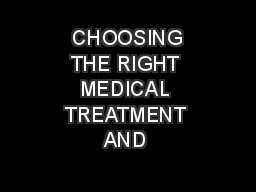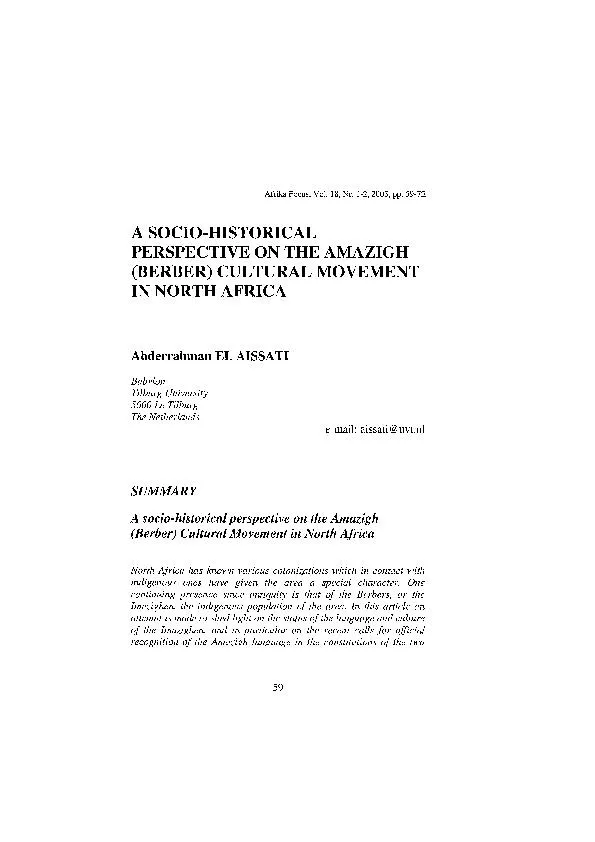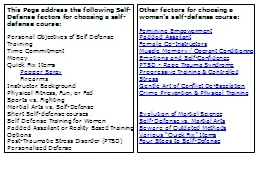PPT-CHOOSING THE RIGHT MEDICAL TREATMENT AND
Author : cheryl-pisano | Published Date : 2020-04-03
RECENT ADVANCES NEELIMA THAKUR MD Epilepsy Burden The lifetime likelihood of Experiencing at least 1 seizure is 9 Receiving a diagnosis of epilepsy is 3
Presentation Embed Code
Download Presentation
Download Presentation The PPT/PDF document " CHOOSING THE RIGHT MEDICAL TREATMENT AN..." is the property of its rightful owner. Permission is granted to download and print the materials on this website for personal, non-commercial use only, and to display it on your personal computer provided you do not modify the materials and that you retain all copyright notices contained in the materials. By downloading content from our website, you accept the terms of this agreement.
CHOOSING THE RIGHT MEDICAL TREATMENT AND : Transcript
Download Rules Of Document
" CHOOSING THE RIGHT MEDICAL TREATMENT AND "The content belongs to its owner. You may download and print it for personal use, without modification, and keep all copyright notices. By downloading, you agree to these terms.
Related Documents










![[PDF READ ONLINE] Starting Off Right in Law School (Starting Off Right Series)](https://thumbs.docslides.com/1020243/pdf-read-online-starting-off-right-in-law-school-starting-off-right-series.jpg)



